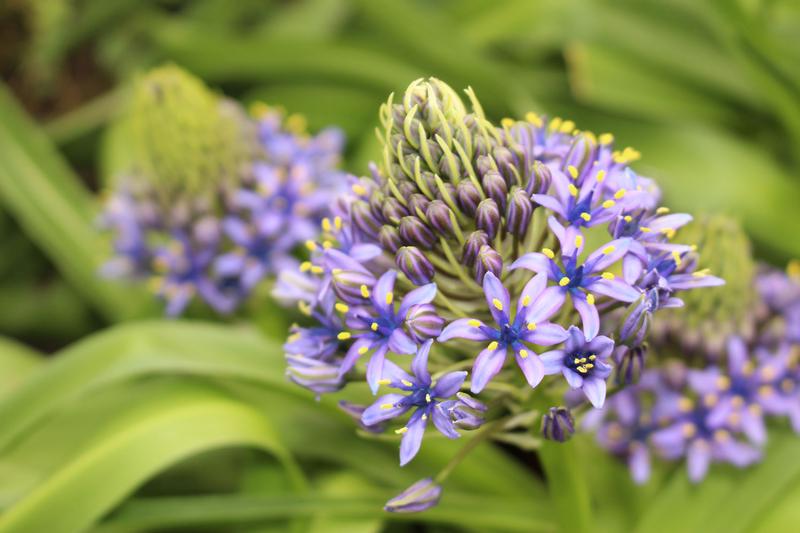Your Guide to Planning, Planting, and Growing Scilla Peruviana
Scilla peruviana, also known as Portuguese squill, is a spring-blooming bulb with striking, lavender-blue flowers. The flower heads can be as large as a softball, with star-like florets that open gradually over a period of 3 weeks or more. The plants have long, strappy leaves similar to a hyacinth, and grow 12-20” tall.
This bulb grows wild in the Western Mediterranean (parts of Italy and North Africa) and performs best in similar climates that are warm and arid. Scilla peruviana are considered winter hardy in zones 7-10 (zone 7 only with winter protection).

How to Grow Scilla Peruviana
Scilla peruviana should be grown in well-drained, relatively lean soil that has a sandy or gritty texture. The bulbs will not tolerate dense, heavy soils or soils that are too rich or too moist. Full sun is best for flowering, though the plants will also grow in partial shade.
Bloom time is late spring to early summer. The plants need moisture before, during and immediately after flowering. During the summer months, the soil should stay as dry as possible. The plants usually lose their foliage for a few months during the summer and then sprout new foliage in the fall. These leaves will persist through winter and spring as long as air temperatures don’t drop much below freezing.
How to Plant Scilla Peruviana
In the wild, the bulbs of scilla peruviana are located at or just above the soil surface. To mimic these conditions, plant the bulbs shallowly so the very tip of the bulb is visible. The bulbs should be spaced about 8 to 10” apart.
In colder areas, Scilla peruviana grows best in containers. Plant the bulbs shallowly and fertilize before and immediately after flowering. Once the foliage fades, stop watering and put the pot in a protected area where the soil will stay relatively dry. Bring the container indoors in the fall to protect the bulbs from cold.

Aftercare for Scilla Peruviana
As with other bulbs, it’s best to remove the spent flowers after they fade. Cut the stems close to the base of the plant. Allow the foliage to continue growing. It will usually yellow and fade away by midsummer.
Over time, Scilla peruviana bulbs can multiply and form large clumps. If flowering gradually decreases, dig and divide the bulbs in early summer to give them more room.
